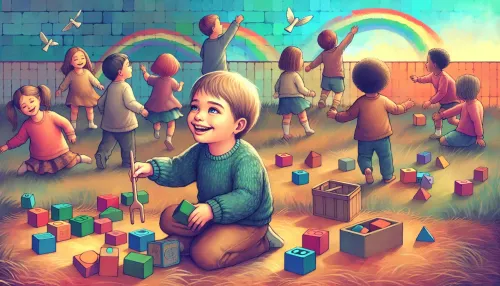Autistic Children's Global Mosaic: Diverse Cultural Narratives and Identities

Autism is a condition that knows no boundaries. It transcends geographical borders and cultural differences, impacting children worldwide. As we look to the future, understanding and embracing the diverse cultural narratives and identities of autistic children becomes increasingly crucial. Let's explore the predictive trends and future outlooks in the field of autism care from a global perspective.
The cultural context plays a significant role in shaping attitudes and perceptions towards autism. Different cultures have varied interpretations of developmental differences, affecting how autistic children are perceived, accepted, and supported within their communities. In the future, a deeper understanding of these cultural nuances will be pivotal in providing more holistic and effective support for autistic children.
Cultural Resonance in Autism Care
Each culture brings its unique approach to understanding neurodiversity. Future developments in the field will emphasize the importance of recognizing and appreciating the heritage of autistic children. By embracing multicultural identities, we can celebrate the richness of diverse perspectives and ensure that interventions are culturally sensitive and inclusive.
Heritage and Neurodiversity in Autism
Traditional festive occasions hold deep cultural significance but can also present challenges for autistic children due to sensory sensitivities. Looking ahead, there will be a growing emphasis on creating inclusive environments during celebrations. Innovative strategies and accommodations will be integrated into global festivities to ensure that all children, including those with autism, can participate and enjoy these cultural events.
Cultural stigmas regarding autism vary widely across different parts of the world. Some cultures may stigmatize autism, attributing it to spiritual factors or viewing it as a source of shame. Conversely, other cultures may have more accepting attitudes towards neurodiversity. In the future, efforts to dismantle stigmas and promote acceptance will involve tailoring interventions to address specific cultural beliefs and misconceptions.
Related Article: Breaking Barriers: Out-of-the-Box Approaches to Addressing Social Challenges Faced by Autistic Children
Inclusive Celebrations for Autistic Children
The future of autism care will see a shift towards incorporating multicultural lenses in understanding and addressing the needs of autistic children. This approach recognizes that diverse ecosystems influence how autism is experienced and managed within different cultural contexts. Culturally competent interventions will be designed to align with the unique social, familial, and community dynamics that shape the lives of autistic children across the globe.
Diverse Cultural Stigmas and Support Systems
As the world becomes increasingly interconnected, there is a growing awareness of the need to harmonize cultural sensitivities in autism care practices. Building bridges between different cultural perspectives will be paramount in fostering a global community that is empathetic and responsive to the needs of autistic children. This harmonization will pave the way for collaborative efforts aimed at creating culturally attuned interventions and support systems.
Related Article: The Intersection of Tradition and Technology: Innovative Approaches in Culturally Diverse Autism Support
Multicultural Approaches to Autism Care
Embracing diversity in autism care means recognizing that there is no one-size-fits-all approach. The future outlook in this regard involves gathering insights from diverse multicultural autism care practices and leveraging this knowledge to inform more inclusive strategies worldwide. By learning from each other's experiences, we can adapt best practices and tailor interventions that respect, honor, and support the diverse narratives and identities of autistic children globally.
In conclusion, the future landscape of autism care for children will be intricately woven into the fabric of diverse cultural narratives and identities. By proactively acknowledging, understanding, and embracing these multifaceted dimensions, we can aspire towards a future where autistic children are valued, supported, and celebrated within their unique cultural contexts.
Frequently Asked Questions
Cultural context significantly influences how autistic children are perceived and supported. Different cultures have unique interpretations of autism, affecting acceptance and intervention strategies. Understanding these cultural nuances is crucial for providing effective support tailored to the specific needs of autistic children within their communities.
To create inclusive environments during global celebrations, innovative strategies must be implemented to accommodate sensory sensitivities often experienced by autistic children. This includes adapting activities, providing quiet spaces, and ensuring that all children can participate fully in cultural events without feeling overwhelmed or excluded.
Embracing diversity in autism care is essential because there is no universal approach that fits all autistic children. By learning from various multicultural practices, caregivers can develop inclusive strategies that respect and honor the unique identities and narratives of autistic children, leading to more effective interventions worldwide.
Check Out These Related Articles

Cultivating Compassionate Communities: Collaborative Efforts in Fostering Inclusive Environments for Autistic Children

Navigating Social Media: Cultivating Connections for Autistic Children Online

Appalachian Ingenuity: Community-Driven Autism Support Networks Thriving in Rural America
